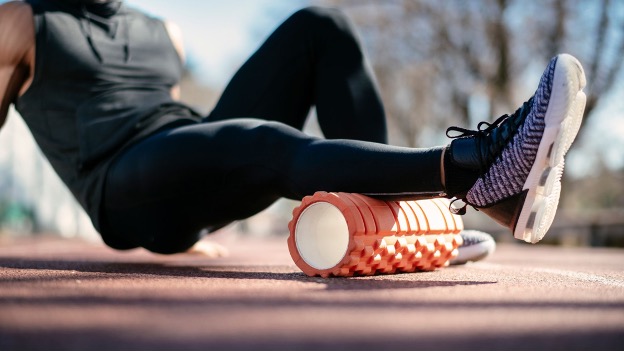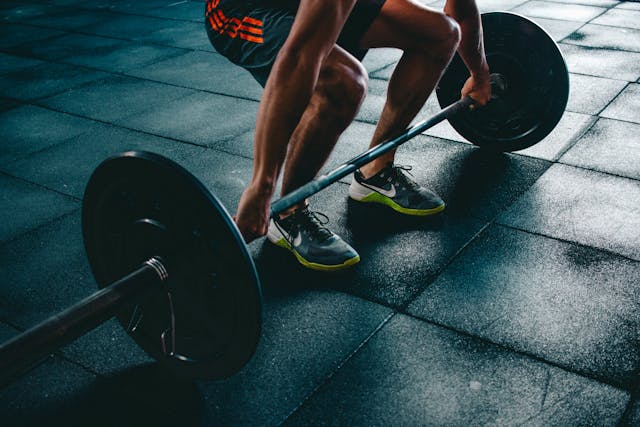If you’re like most people, you probably think of foam rolling as a way to help loosen up tight muscles and improve your range of motion. And that’s definitely one of the key benefits of foam rolling! But there’s much more to this simple tool than that. In fact, foam rolling can actually improve your mobility in a number of ways.
Keep reading to find out what foam rolling is and what you need to know to get started using this handy tool!
What Does Using A Foam Roller Accomplish?
Fascia, which is a flexible tissue that surrounds muscles, binds the muscles together. This tissue is considered to influence your flexibility and joint range of motion.
Foam rolling has been shown in studies to be similar to a technique called, “self-myofascial release,” which means it allows the fascia to be more flexible and helps eliminate scar tissue and adhesions.1

Which Type Of Foam Roller Should I Get?
There are two common types of foam rollers:
- A roller with a hollow but solid PVC core surrounded by a layer of neoprene foam.
- A traditional roller composed entirely made of foam.
In 2006, a study was conducted to compare these two common types of rollers.2 According to the results of the study, the hollow but solid PVC core design appears to generate higher pressure on the fascia than the traditional foam roller.
There are many different types of foam rollers available in the market that have different features and are designed to target different body parts.3

How Long Should I Use The Foam Roller?
One research found out that 2 minutes on the roller in the form of 2 x 1-minute sessions with a 30-second rest between each session resulted in very good results.
Another study found out that between 1 and 5 minutes on each muscle group or working until a sensation of release is felt may be required.

How Often Should I Use A Foam Roller?
Research on this is considerably less clear. There is a lack of in-depth study that looked into this particular factor. However, as with many exercise techniques, general safety guidelines should be followed:
- If you’re a flexible athlete who rarely experiences muscular tightness, there’s unlikely to be many benefits in doing regular foam roller exercises.
- If you’re like many other recreational athletes or weekend warriors, you might be dealing with persistent tight areas, you may need to use it every other day for a short period until your tightness gets better.
- You can use a roller too frequently and too hard, resulting in a buildup of microtears in the muscles that cause discomfort.
- In most situations, a few times each week is enough, but you may increase this to as many as three times per day if it doesn’t make your pain worse and you make the transition gradually.
In many ways, a foam roller is similar to stretching, and many stretching routines recommend doing so three times a day, making it possible with the roller as well.

How Does Foam Rolling Compare To Stretching?
A study done in 2015 compared the effects of stretching to using the foam in improving the flexibility of the hamstring muscles (the muscles in the back of your thigh).4 What the researchers found out was that the foam roller can be seen as an effective tool to increase hamstring flexibility within 4 weeks.
The effects are comparable with the scientifically proven contract-relax PNF stretching method.

Summary
Now that you know more about foam rolling, you don’t have to be afraid of using foam rollers. It’s time to get started!
Follow the guidelines above to find out how long and how often you should use a foam roller for your specific needs.
Remember, start slowly and increase usage gradually if needed. As with any new exercise routine, if you experience pain, stop immediately and consult a physician.
- https://journals.lww.com/nscajscr/Fulltext/2013/03000/An_Acute_Bout_of_Self_Myofascial_Release_Increases.34.aspx
- https://pubmed.ncbi.nlm.nih.gov/19160916/
- https://drlexgonzales.com/foam-rollers/
- https://pubmed.ncbi.nlm.nih.gov/25992660/
Author Bio
Dr. Lex Gonzales, PT, DPT is an award-winning author who has been a physical/physiotherapist for over twenty-four years with a special interest in the field of geriatric rehabilitation. He received his degree of Doctor of Physical Therapy from the University of South Florida.
Visit him at drlexgonzales.com



